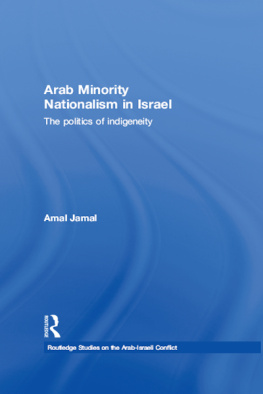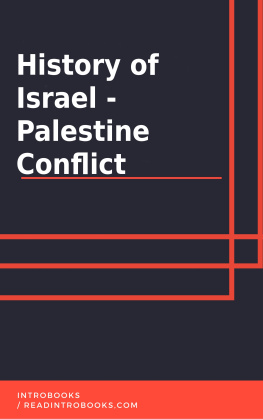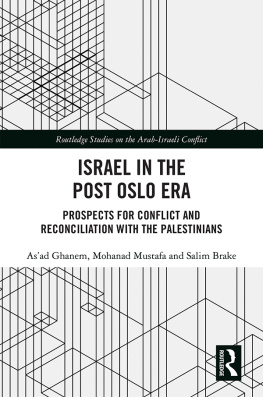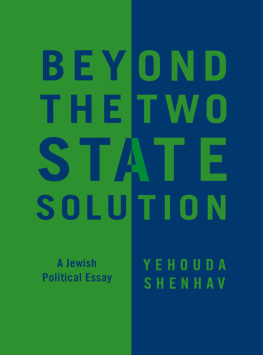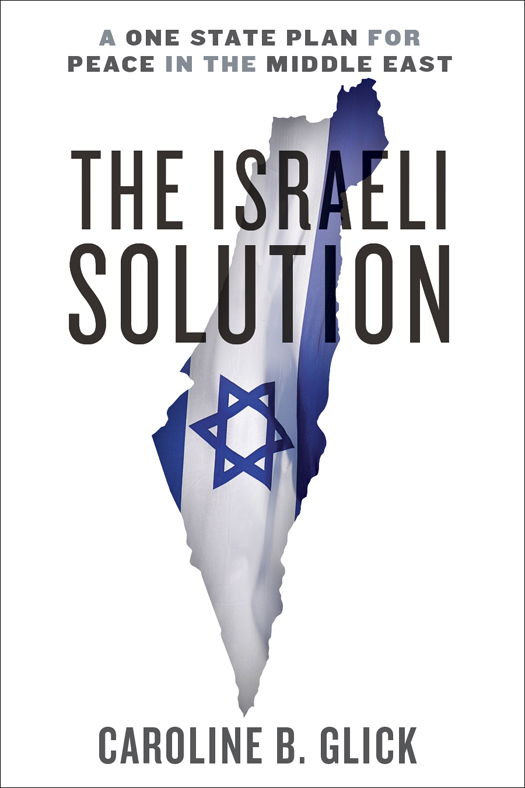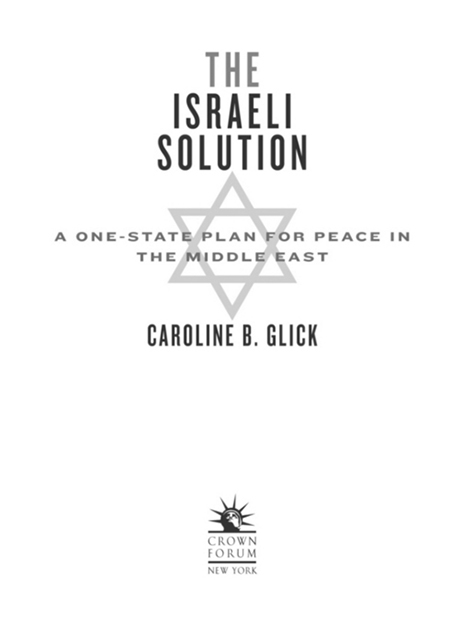Caroline Glick - The Israeli Solution: A One-State Plan for Peace in the Middle East
Here you can read online Caroline Glick - The Israeli Solution: A One-State Plan for Peace in the Middle East full text of the book (entire story) in english for free. Download pdf and epub, get meaning, cover and reviews about this ebook. year: 2014, publisher: Crown Forum, genre: Politics. Description of the work, (preface) as well as reviews are available. Best literature library LitArk.com created for fans of good reading and offers a wide selection of genres:
Romance novel
Science fiction
Adventure
Detective
Science
History
Home and family
Prose
Art
Politics
Computer
Non-fiction
Religion
Business
Children
Humor
Choose a favorite category and find really read worthwhile books. Enjoy immersion in the world of imagination, feel the emotions of the characters or learn something new for yourself, make an fascinating discovery.

- Book:The Israeli Solution: A One-State Plan for Peace in the Middle East
- Author:
- Publisher:Crown Forum
- Genre:
- Year:2014
- Rating:3 / 5
- Favourites:Add to favourites
- Your mark:
The Israeli Solution: A One-State Plan for Peace in the Middle East: summary, description and annotation
We offer to read an annotation, description, summary or preface (depends on what the author of the book "The Israeli Solution: A One-State Plan for Peace in the Middle East" wrote himself). If you haven't found the necessary information about the book — write in the comments, we will try to find it.
The reigning consensus in elite and academic circles is that the United States must seek to resolve the Palestinians conflict with Israel by implementing the so-called two-state solution. Establishing a Palestinian state, so the thinking goes, would be a panacea for all the regions ills. It would end the Arab worlds conflict with Israel, because the reason the Arab world is anti-Israel is that there is no Palestinian state. It would also nearly erase the principal cause of the violent extremism in the rest of the Middle East.
In a time when American politics are marked by partisan gridlock, the two-state solution stands out for its ability to attract supporters from both sides of the ideological divide. But the great irony is that it is one of the most irrational and failed policies the United States has ever adopted.
Between 1970 and 2013, the United States presented nine different peace plans for Israel and the Palestinians, and for the past twenty years, the two state solution has been the centerpiece of U.S. Middle East policy. But despite this laser focus, American efforts to implement a two-state peace deal have failedand with each new attempt, the Middle East has become less stable, more violent, more radicalized, and more inimical to democratic values and interests.
In The Israeli Solution, Caroline Glick, senior contributing editor to the Jerusalem Post, examines the history and misconceptions behind the two-state policy, most notably:
- The huge errors made in counting the actual numbers of Jews and Arabs in the region. The 1997 Palestinian Census, upon which most two-state policy is based, wildly exaggerated the numbers of Palestinians living in the West Bank and Gaza.
- Neglect of the long history of Palestinian anti-Semitism, refusal to negotiate in good faith, terrorism, and denial of Israels right to exist.
- Disregard for Israels stronger claims to territorial sovereignty under international law, as well as the long history of Jewish presence in the region.
- Indifference to polling data that shows the Palestinian people admire Israeli society and governance. Despite a half-century of domestic and international terrorism, anti-semitism, and military attacks from regional neighbors who reject its right to exist, Israel has thrived as the Middle Easts lone democracy.
After a century spent chasing a two-state policy that hasnt brought the Israelis and Palestinians any closer to peace, The Israeli Solution offers an alternative path to stability in the Middle East based on Israeli sovereignty over Judea and Samaria.
Caroline Glick: author's other books
Who wrote The Israeli Solution: A One-State Plan for Peace in the Middle East? Find out the surname, the name of the author of the book and a list of all author's works by series.


